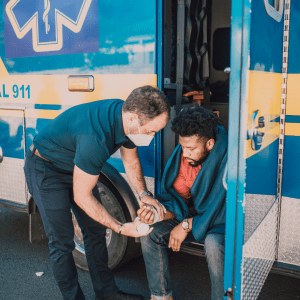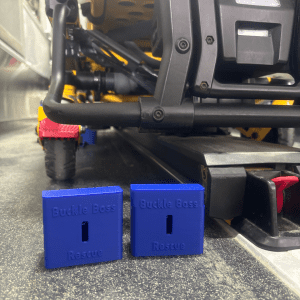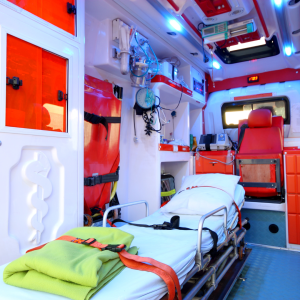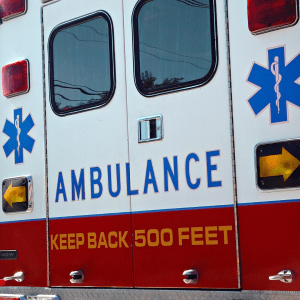Every day, Emergency Medical Services (EMS) personnel bravely face a range of challenges that come with their crucial role. From navigating high-stress situations to managing physical demands, their job is never easy. Among these hurdles, one particularly troubling issue stands out: the risk posed by patients who free themselves from ambulance seat belts and may become aggressive.
Addressing this issue is vital—not just for the safety of the EMS teams, but for the patients as well. In this blog, we’ll take a closer look at why these incidents occur and how we can improve safety measures and protocols to protect everyone involved. By fostering a safer transport environment, we ensure that EMS personnel can continue their lifesaving work with greater security and peace of mind.
Background and Scope of the Problem
While most patient interactions in the field of emergency medical services (EMS) are safe and controlled, there are occasional exceptions that remind us of the risks our dedicated EMS teams face. Statistics reveal that incidents where EMS personnel are attacked by patients, though relatively rare, are deeply concerning. For instance, during emergency calls, some EMS workers have encountered patients who, feeling agitated or disoriented—sometimes due to medical conditions or the influence of substances—have managed to free themselves from restraints, leading to unexpected and dangerous situations.
One such example occurred when a patient, under the influence and panicked, unbuckled their seat belt and lashed out, causing injuries to both the EMS workers trying to assist them and themselves. These incidents underscore the complex challenges EMS personnel navigate while transporting patients, especially those experiencing severe anxiety or the effects of intoxication.
Understanding and addressing these risks is crucial. It not only helps in safeguarding our EMS personnel but also ensures that all patients receive the care they need in a secure and controlled environment. Our goal is always to provide a safe journey for both patients and EMS teams, recognizing the bravery and resilience of those who are always ready to help us in emergencies.
Causes and Contributing Factors
In the dynamic environment of emergency medical services (EMS), understanding why patients might try to escape their seat belts is key to fostering safer interactions. There are several reasons why such situations can arise, each requiring a compassionate and thoughtful response.
Patients struggling with mental health issues may feel overwhelmed or threatened in the unfamiliar confines of an ambulance, leading them to remove their restraints. Similarly, those under the influence of drugs or alcohol might not fully grasp their surroundings, reacting impulsively or out of confusion. Fear also plays a significant role, as the high-stress environment of an emergency can make anyone feel uneasy or scared, especially if they’re unsure about what’s happening to them.
Sometimes the seat belts themselves might not be adequate—either due to wear and tear or design flaws—or they might not be properly secured. On top of that, if EMS personnel aren’t equipped with the right training or protocols to handle such delicate situations, it can increase the risk of a patient attempting to free themselves.
By deepening our understanding of these factors, we can improve training, equipment, and procedures, ensuring a safer and more reassuring environment for both patients and EMS personnel.
This is exactly why we created the Buckle Boss Rescue. This innovative device is designed to enhance the security of restraints used in ambulances, ensuring that they are both safe and effective for patients in varied states of distress. The Buckle Boss Rescue features a secure locking mechanism that prevents patients from releasing themselves, while still allowing for quick release by EMS personnel when necessary.
Impact on EMS Personnel
When EMS personnel face attacks from unrestrained patients, the consequences can extend far beyond the immediate physical injuries, which are often significant on their own. Such experiences can also leave deep psychological scars, including stress and trauma, which may linger well after the physical wounds have healed. This emotional toll is not just a personal burden; it can affect job performance, reducing the ability to provide care and potentially leading to decreased job satisfaction.
The impact of these incidents on EMS professionals can ripple out further, influencing broader aspects of the field. For instance, frequent encounters with violence can make it harder to retain experienced EMS personnel. Those who joined the field to help others might find themselves reconsidering their career choice if they frequently face dangerous situations.
Creating a supportive and safe work environment is essential. By addressing both the physical and psychological impacts of these encounters, we can help ensure that EMS professionals feel valued and protected. This not only aids in retaining current staff but also in attracting new recruits, sustaining the vital flow of passion and dedication that is the backbone of emergency medical services.
Current Measures and Protocols
In the world of Emergency Medical Services (EMS), ensuring the safety of both patients and personnel is paramount. That’s why a range of safety protocols and safety tools, including the innovative Buckle Boss Rescue, are carefully implemented. This device enhances the security of patients, keeping them safe during transport, and maintaining a safe environment for everyone involved while respecting patient dignity.
Understanding the legal landscape surrounding the use of safety tools like the Buckle Boss Rescue is crucial. It helps EMS personnel navigate the complexities of providing care while adhering to legal boundaries and ethical considerations. Thorough training programs are in place to equip
EMS workers with the skills needed to de-escalate potentially volatile situations effectively. These programs focus on communication, empathy, and tactical responses that reduce the need for physical restraints and promote a calm, trusting atmosphere.
Such training underscores the commitment to compassionate care, ensuring that EMS teams are prepared not just to respond to medical emergencies, but also to manage the challenges of high-stress interactions. This holistic approach fosters a safer, more supportive environment for both the patients in need and the dedicated professionals who serve them.
Case Studies and Real-Life Examples
In the bustling city of Portland, Oregon, EMS personnel frequently navigate challenging scenarios that test both their medical expertise and their ability to manage complex human interactions. One notable incident involved a team responding to a distress call from a downtown area, where they found an agitated individual in need of urgent care. Despite the tension, the EMS team managed to de-escalate the situation using communication skills they had honed through recent defense training programs, as highlighted in a detailed report from Twin Tiers article.
The patient, initially resistant, was calmed by the patient and respectful approach of the responders, allowing them to administer necessary treatment safely and efficiently. This incident not only demonstrated the effectiveness of their training but also reinforced the importance of empathy and understanding in high-pressure situations.
From incidents like these, valuable lessons are learned and best practices are refined.
One significant takeaway has been the increased focus on scenario-based training, ensuring that EMS personnel are as prepared for the human elements of their job as they are for the medical ones. Such experiences underscore the critical role of continuous learning and adaptation in emergency medical services, enhancing both patient outcomes and responder safety.
Recommendations for Improvement
In the heart of our community, EMS personnel work tirelessly to ensure our safety. Recognizing their dedication, there’s a continuous effort to enhance their training, focusing particularly on de-escalation techniques. This training equips them with the skills to calm tense situations gently and effectively, making each call safer for everyone involved.
Simultaneously, we’re seeing significant improvements in the safety measures and restraint systems within ambulances. These advancements help secure patients during transit while maintaining comfort and dignity. Coupled with policy changes aimed at protecting both EMS personnel and patients, the working environment becomes safer and more nurturing.
Technology is playing a pivotal role in revolutionizing patient care. Innovative tools are now being used to monitor and manage patient behaviour, ensuring swift responses to any arising needs. This integration of technology not only enhances safety but also supports EMS teams in delivering compassionate, effective care.
As we reflect on the crucial issue of patient attacks on EMS personnel, it’s clear that the safety of our emergency responders is paramount. Implementing devices like the Buckle Boss Rescue, which enhances restraint security, is a step forward in protecting both patients and EMS teams during transport. This tool exemplifies the type of equipment innovation that can make a real difference in the field.
We must continue to advocate for better training, more effective equipment, and stronger policies to safeguard our EMS personnel. Additionally, ongoing research and open dialogue are essential to continually refine these strategies and discover new solutions that can prevent future incidents.
Let’s commit to supporting our EMS heroes by providing them with the tools, training, and policies they need to do their jobs safely and effectively. By doing so, we ensure that they can continue their vital work, serving our communities with security and care.





